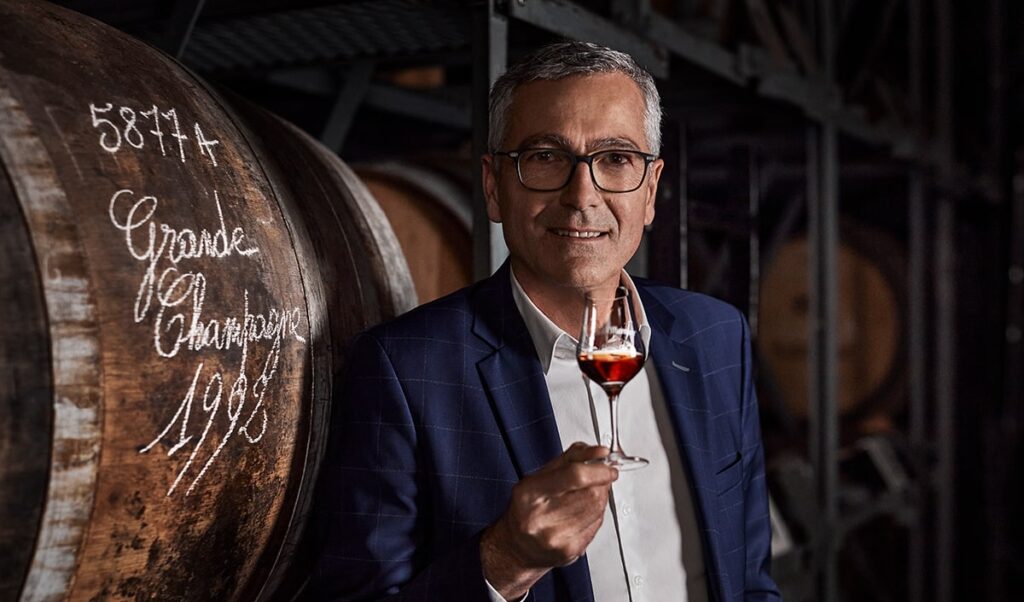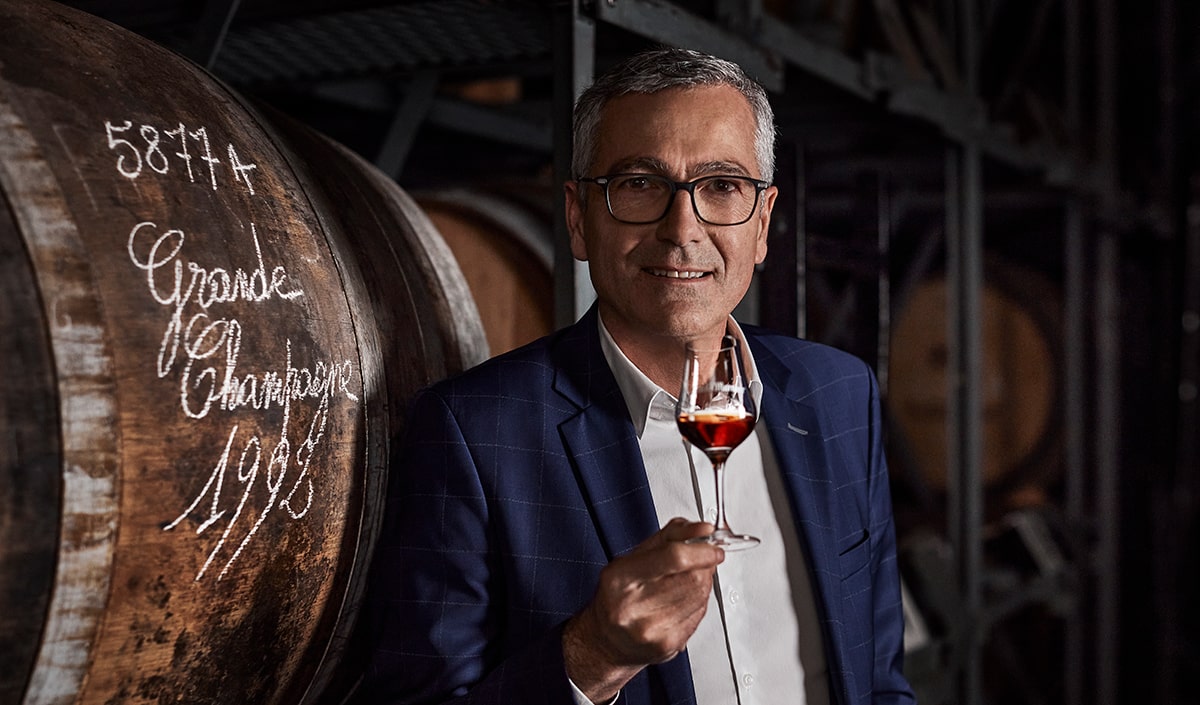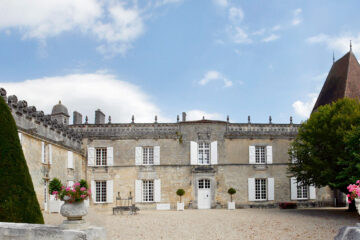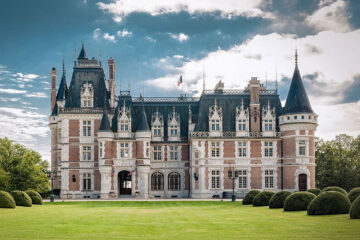Cognac: An Origin, A Region, An Essence
Embark with us on a trip to France, where we unravel the history, opulence and luxury of the country’s finest cognac.
Grand Marnier and Bisquit & Dubouché share a rich French heritage, which I had the privilege of learning more about while visiting Paris and the countryside of Cognac, France.
Community and celebration are just two of the words that are ingrained in my mind as I think about the incredible experience I had in France with Bisquit & Dubouché and Grand Marnier — unforgettable and educational, they’ll be memories that I will cherish forever.
From the first day in Paris where I learned about the Belle Époque, a period of prosperity and glamour in Europe, to the time I spent in the countryside, I quickly learned that cognac is more than just something you drink. It is something much bigger.
Both Grand Marnier and Bisquit & Dubouché have extremely rich and opulent histories that are intertwined with luxury French brands such as the Hôtel Ritz and Baccarat and connections to Parisian high life and a gilded age. While in Paris I had the pleasure of tasting classic cocktails including a classic Manhattan made with Bisquit & Dubouché as well as a Grand Margarita made with Grand Marnier. Paris, with its overwhelming atmosphere of luxury and opulence, set the stage perfectly for the rest of my trip.
We spent the majority of our trip in Cognac, tasting and discovering everything the region has to offer. The four-hour train ride from Paris to Cognac is over 500 kilometres, but it seemed to take no time at all, and the beautiful towns and landscapes passing by my window made me even more excited once I finally arrived in the town from which the spirit gets its name. Over the next two days I had the honour of visiting both the Grand Marnier and Bisquit & Dubouché distilleries and was able to see and learn more about their complex methods of distillation and production. And, of course, there were tastings of both brands in a number of different variations, including delicious cocktails — which I can’t wait to recreate for myself. I also had the opportunity to taste delectable food pairings that further highlighted the versatility and complexity of the beverages, with a simple bite of chocolate and sip of cognac being one of the best pairings you could ever imagine.
The region itself has a quaint and homey feel, with beautiful old buildings and stunning castles such as the Château de Bourg-Charente, the home of Grand Marnier, which I had the pleasure of visiting and even dining in. Contrasting with these architectural marvels is the sprawling landscape that surrounds them, its vineyards laden with the white grapes that will one day be transformed into cognac. What truly makes the region special is the kindness of those who live there. Everyone I encountered was truly proud and passionate about their work. Through my discussions with the local people, I was able to gain an understanding of the history and culture of Cognac — the region and the brand — that I did not have before. Understanding the modesty of the Cognac region means understanding how extraordinary it is that such an elegant spirit emerged from such a rustic setting.
The company that makes Grand Marnier was founded in 1827 by distiller Jean-Baptiste Lapostolle. In 1880, Louis-Alexandre Marnier- Lapostolle, with a goal to create the perfect, best and most exclusive liqueur France, blended cognac and a rare variety of West Indian oranges to produce Cordon Rouge — and voilà, their signature product and brand was born. The name “Grand Marnier” was bestowed by hotelier César Ritz, a friend of Louis-Alexander Marnier-Lapostolle, who is reputed to have said, “A grand name for a grand liqueur.”
Bisquit & Dubouché is a prestigious French cognac brand with over 200 years of history. Established in 1819 by Alexandre Bisquit and Adrien Dubouché, the brand has become known for its unique distillation method, which provides a distinct and superior product. While in the Cognac region I had the privilege of meeting representatives from both Grand Marnier and Bisquit & Dubouché, who showed us around the distilleries and enjoyed dinners and tastings with us. During this time, I learned more about their personal histories and connections with the brand, which were rich in and of themselves.
Vincent Chappe is the Ambassadeur Global de la Maison Bisquit & Dubouché. Chappe is from Jarnac in the Cognac region, the same area from which Bisquit originates. Although Vincent himself has 40+ years in the cognac industry, he and his family have been in the spirits industry for generations, as wine growers, distillers, and packers of cognac, with some of his family even working in the distillery in which Bisquit is made today.
“We protect the tradition and respect the recipe, but we always have in mind the research and development for the future.”
Patrick Leger is the Director of Operations and Master Blender for both Grand Marnier and Bisquit & Dubouché Cognac. Just like Vincent, Patrick was born in the Cognac region into a family that has been involved in the cognac industry for generations.
A love of and appreciation for cognac were ingrained in both Mr. Chappe and Mr. Leger from childhood, and they both grew up with a respect for the land and the products they help produce today. When I spoke with them it was evident that their passion for the industry was unlike any other, as they recounted some of their memories of growing up in the region, working in the industry, and being part of the community.
Grand Marnier is the only premium liqueur to combine 51% French cognac with bitter orange essence. Together those two flavours marry, creating an exotic and luxurious liqueur with complexity and deliciousness that has stood the test of time. The brand’s product range includes Cordon Rouge, Cuvée Louis- Alexandre, Cuvée Du Centenaire, Grande Cuvée Révélation and Grande Cuvée Quintessence.
Bisquit & Dubouché is known for its unique distillation process, one that allows the distillers to truly show off their mastery of the craft honed through years of experience, as they let aromas and flavours lead the way instead of having strict parameters. Only by tasting the products continuously are they able to choose the precisely right time that the cognac is ready, and when V.S.O.P., V.S., and X.O. are determined.
Cognac can only be made in the Cognac region of France, an area of less than 16 square kilometres, making it extremely exclusive, indeed. This is a region that is special for so many reasons, one of which is the sense of community. Although there are many competitors in the area, they all find a way to work together to improve the product and the land, and all respect the integrity and history of the products that they produce. Grand Marnier and Bisquit & Dubouché work together under the same brand now, yet Patrick says what makes the region as a whole special is its rigour in upholding the product’s reputation — to protect production quality, everyone works together, even with their competitors, who work and meet together in a group effort to find solutions, whether to raise the quality and improve the process or to tackle issues that may come up such as climate change. Vincent says, “The Cognac region is a village. It has about 1,800 people — we know each other and we are friends.”
One major feature of this is the appellation d’origine contrôlée (AOC), which identifies an agricultural product and where and how its production and processing are carried out. This strictly controlled labelling helps to protect the production and the quality of the products, which, Patrick notes, are the subjects of many of their meetings.
So the producers are not only working together for the present, they are working together for the future. Vincent tells us that after planting the vines it takes four years before the first grapes are harvested. If you wish to mature cognac to an X.O. quality, “What you make this year will be for the next generation,” he says.
“What is interesting in the cognac category is that sometimes you are working for the future generation,” Patrick says. “We must build the stock and the history of the brand for the next generation. We need to respect the quality and to think about the future. So, one foot in the future and another one in history and this is what is interesting in Grand Marnier.”
The balance of savoir faire and innovation is the true pedigree of these brands. “We protect the tradition and respect the recipe, but we always have in mind the research and development for the future. We are learning every year because every harvest is different, so every year we learn more about the distillation. The climate is changing, so the wine is changing, the orange peels are changing, so we are always thinking about finding a solution to adapt and maintain our quality, every day,” Patrick says. Grand Marnier is looking to ride the sustainability wave of the Campari Group, with a strict objective to reduce water, energy, and carbon consumption. Bisquit & Dubouché is also looking to create more sustainable ways to produce heat for the distillery, such as utilizing the vapours produced by the distilling process for fuel, but making innovative changes such as these takes time. The Campari Group knows it will be a slow process, but they are committed to respecting the process of production while doing more for the environment.
Cognac and Grand Marnier are not just for the older generation. Many young people once thought so, since these liqueurs reminded us of memories we had of our family members enjoying them, maybe just at holiday time or on special occasions. Although these spirits do have an air of luxury and costliness, there are different levels of the products that all can afford to enjoy. Starting off with a V.S. Cognac from Bisquit & Dubouché or a Grand Marnier Cordon Rouge is an easy and more accessible way for younger consumers to try them out.
One of my favourite memories from my time in France was visiting the cellar in the Château de Bourg-Charente. After an exquisite meal in the château’s dining room, Patrick Leger invited us into the cellar, which features beautiful original exposed brick, and demijohns of cognac from generations before. Sitting at the long wooden table, with candles flickering, we spoke about the history of Grand Marnier while tasting an extraordinary 93-year-old cognac. As Mr. Leger opened the demijohn from 1930, I knew this was going to be the most incredible cognac I had ever tasted, and it was.
Cocktails are the perfect entryway for those who haven’t had much experience with cognac or Grand Marnier: mix and match flavours to find your favourite. While at the Château de Bourg-Charente I had the incredible experience of creating cocktails such as the Grand Margarita and the Mai Tai, a great way to sample the product and a great arm workout! While with Bisquit & Dubouché we also had an incredible tasting experience — a drink called the Summit, the region’s classic cocktail made with cognac, lemonade, ginger root, lime peel and cucumber peel. Patrick recommends the Grand Tonic as the first cocktail you make at home with Grand Marnier, because it is the simplest and respects the product, or if you are a bit more advanced, try out the Grand Margarita, his (and my) favourite Grand Marnier cocktail. If you choose to drink V.S.O.P. or any cognac on the rocks, straight, or with a mixer such as a classic tonic or high-quality ginger ale, it will alter the taste, so to maximize the flavour it is often best to try the more aged Bisquit & Doubouché or Grand Marnier on their own or with an ice cube. But as Vincent says, “Enjoy it the way you wish.”
Although my time in France has come to an end, it has given me an understanding of what both brands represent, how special the region is and, well … how much I love cognac.
Enjoy your Grand Marnier and Bisquit & Dubouché this holiday season — and Santé!





























































































